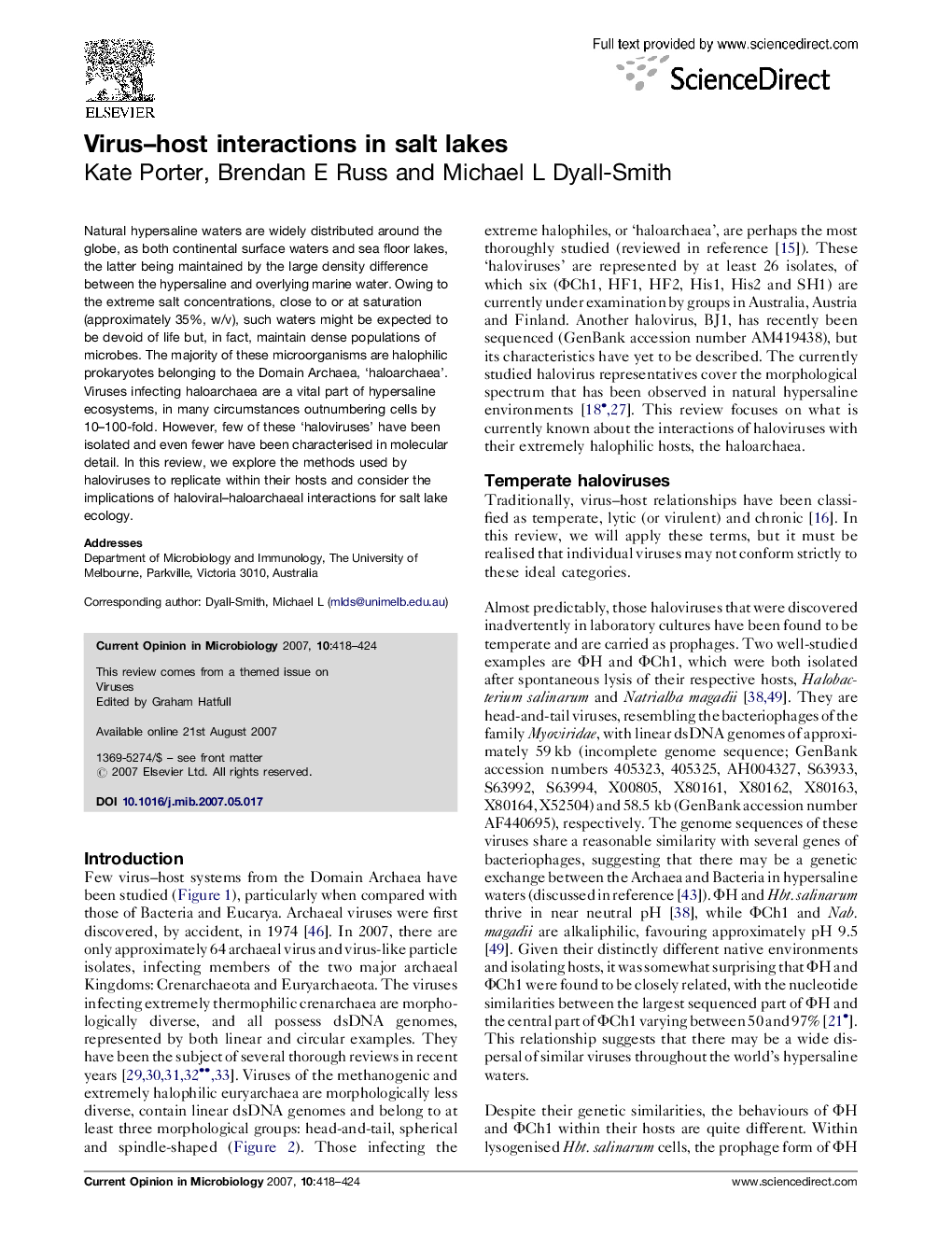| Article ID | Journal | Published Year | Pages | File Type |
|---|---|---|---|---|
| 3399660 | Current Opinion in Microbiology | 2007 | 7 Pages |
Natural hypersaline waters are widely distributed around the globe, as both continental surface waters and sea floor lakes, the latter being maintained by the large density difference between the hypersaline and overlying marine water. Owing to the extreme salt concentrations, close to or at saturation (approximately 35%, w/v), such waters might be expected to be devoid of life but, in fact, maintain dense populations of microbes. The majority of these microorganisms are halophilic prokaryotes belonging to the Domain Archaea, ‘haloarchaea’. Viruses infecting haloarchaea are a vital part of hypersaline ecosystems, in many circumstances outnumbering cells by 10–100-fold. However, few of these ‘haloviruses’ have been isolated and even fewer have been characterised in molecular detail. In this review, we explore the methods used by haloviruses to replicate within their hosts and consider the implications of haloviral–haloarchaeal interactions for salt lake ecology.
